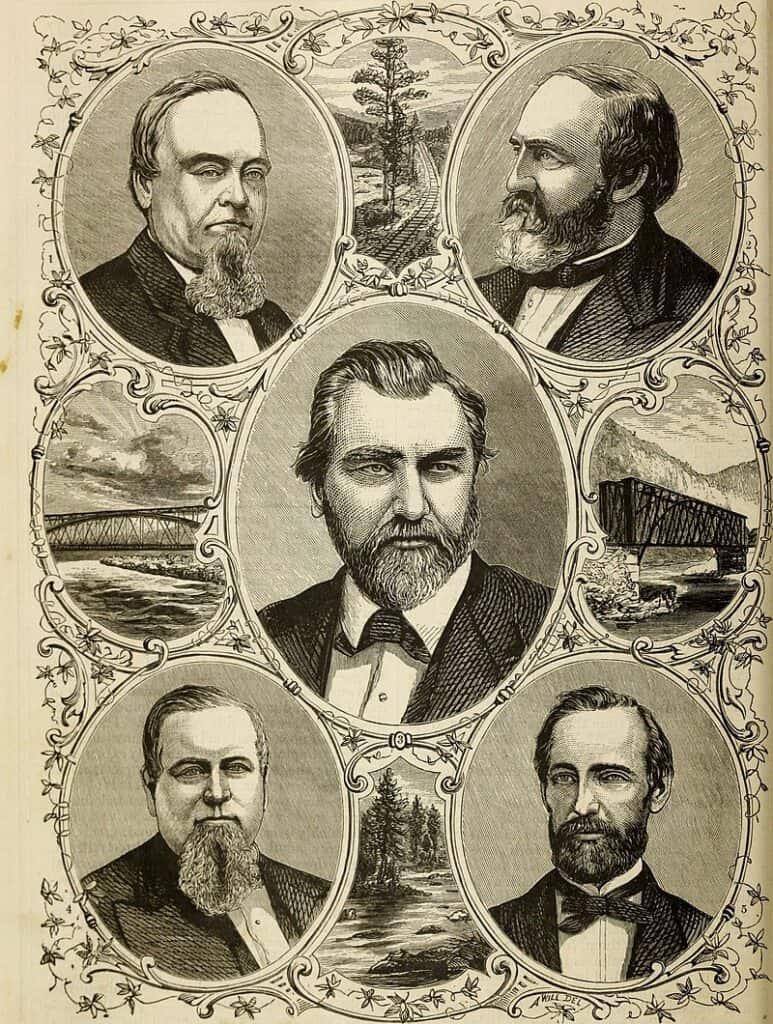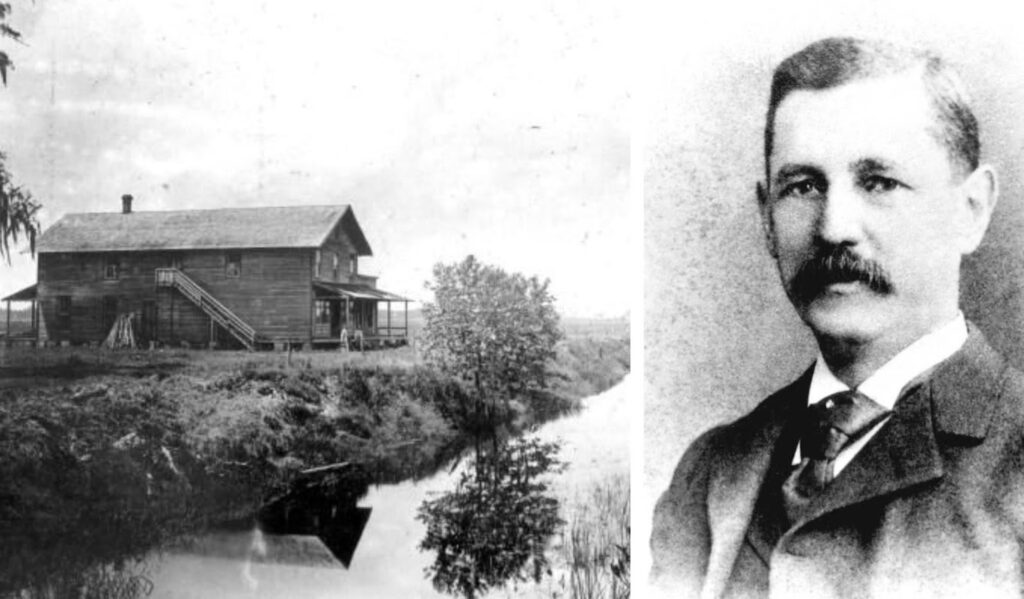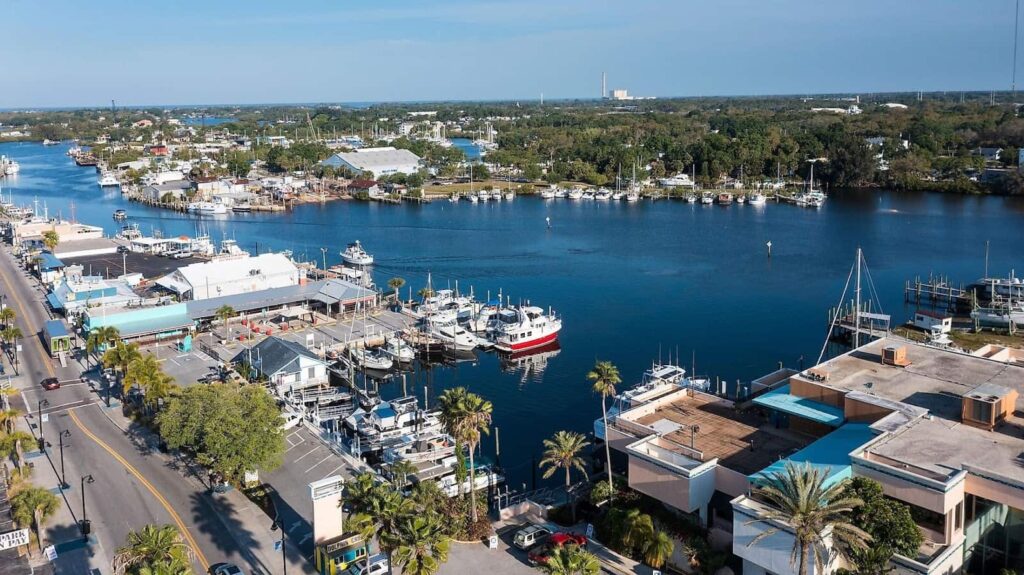In the late 19th century, Florida witnessed a monumental shift in its economic and political trajectory, propelled by the audacious endeavors of railroad magnates. This narrative unfolds against the backdrop of the Disston Purchase, a pivotal moment that cleared the path for mass development in South Florida, reshaping the state’s destiny.
Who were the 4 railroad barons of California?

California has a rich history of railroad development, and four prominent figures stand out as key railroad barons in the state:
- Leland Stanford: A former governor of California, Leland Stanford was one of the “Big Four” who played a crucial role in the construction of the Central Pacific Railroad, part of the First Transcontinental Railroad completed in 1869;
- Collis Potter Huntington: Another member of the “Big Four,” Collis P. Huntington was instrumental in the construction of the Central Pacific Railroad and later became a key figure in the Southern Pacific Railroad, contributing significantly to the development of California’s rail network;
- Mark Hopkins: One of the original investors in the Central Pacific Railroad and a member of the “Big Four,” Mark Hopkins played a crucial financial role in the success of the railroad project;
- Charles Crocker: The fourth member of the “Big Four,” Charles Crocker was the construction supervisor for the Central Pacific Railroad. His engineering and organizational skills were vital to the completion of the transcontinental rail link.
These four individuals, collectively known as the “Big Four,” were influential in shaping California’s rail infrastructure during the 19th century.
Land of Opportunity: Disston’s Strategic Vision

Hamilton Disston, a Philadelphia saw manufacturer, emerged as a white knight for a debt-ridden Florida. His 1881 purchase of four million acres, spanning from the Kissimmee Basin to the Everglades, marked a turning point. At just twenty-five cents an acre, Disston’s acquisition unleashed a wave of agricultural potential, sparking the rapid development of South Florida:
- Hamilton Disston was not a railroad baron but rather a prominent figure in Florida’s economic development during the late 19th century. Born on August 23, 1844, Disston was a successful American industrialist and businessman. His notable contributions to Florida include the Disston Purchase of 1881, a significant land acquisition that played a pivotal role in the state’s history;
- In 1881, Disston entered into an agreement with the state of Florida to purchase four million acres of land at the cost of twenty-five cents per acre. This vast expanse of land, extending from the Kissimmee Basin to the Everglades and encompassing large sections along the Gulf Coast, became known as the Disston Purchase. The purpose of this acquisition was to drain the swampy lands and make them suitable for agricultural use;
- Disston’s vision and investment in Florida’s real estate had a transformative impact on the state’s development. His canal company worked to dredge large sections of fertile lands out of the Kissimmee marshes, opening up new agricultural regions virtually overnight. Disston also played a role in the establishment of towns such as Tarpon Springs and Disston City.
While not a railroad baron, Hamilton Disston’s actions significantly influenced Florida’s economic landscape, contributing to the state’s growth and development in the late 19th century.
Railroads and Wealth: Disston’s Impact on the Landscape

Disston’s canal company transformed vast stretches of Kissimmee marshes into fertile lands, heralding the birth of new agricultural regions. The creation of towns like Tarpon Springs and Disston City paved the way for Florida’s agricultural boom. However, this progress came at a cost, as homesteaders in the Kissimmee Valley found their titles superseded by the Swamp Act, leading to uneasy times for farmers.
Railroad Barons and the Birth of Towns
Beyond Disston, Florida’s destiny was further shaped by influential railroad barons like William D. Chipley, Henry B. Plant, and Henry M. Flagler. Chipley’s efforts in West Florida facilitated large-scale development, particularly in lumber and farming interests. Plant’s endeavors on the West Coast turned Tampa into a freight hub, while Flagler’s ambitious expansion spanned from Northeast Florida to Key West, leaving an indelible mark on the state.
William Dudley Chipley was a prominent figure in the late 19th-century development of Florida, particularly in the Panhandle region. Born on November 6, 1840, in Columbus, Georgia, Chipley became a notable railroad executive and played a crucial role in the economic growth of West Florida. Here are key aspects of William D. Chipley’s contributions:
- Railroad Development: Chipley was a visionary and influential figure in the expansion of railroads in the Panhandle. In 1874, he received a charter to construct the Pensacola and Atlantic Railroad (later part of the Louisville and Nashville Railroad) across West Florida to Apalachicola. This railroad connection was vital for the transportation of lumber, a major industry in the region;
- Economic Impact: Chipley’s efforts in the development of railroads promoted large-scale growth in the Panhandle’s lumber and farming sectors. By connecting the Panhandle to northbound railroads in East Florida, he facilitated the movement of goods and contributed to the economic prosperity of the region;
- Innovative Leadership: Chipley had a knack for revitalizing bankrupted railroads and turning them into profitable enterprises. Through improvements in rolling stock and the development of efficient shipping systems, he played a crucial role in making railroads financially viable;
- Gulf Coast Development: The influence of Chipley extended to the Gulf Coast region, where he encouraged urban development. In 1906, George M. West started the Gulf Coast Development Company on St. Andrews Bay, fostering the growth of coastal urban centers. Chipley’s impact continued, with the establishment of towns like Panama City;
- Legacy: William D. Chipley’s legacy in Florida is tied to his role in expanding railroads, fostering economic growth, and influencing the development of urban centers. The city of Chipley in Washington County, Florida, is named in his honor.
While not as well-known as some other railroad magnates of his time, William D. Chipley’s contributions were instrumental in shaping the economic landscape of West Florida in the late 19th and early 20th centuries.
Building Empires: Flagler’s Railroad Triumph
Henry Flagler, an ambitious railroad tycoon, orchestrated a grand vision that stretched from Jacksonville to Key West. His railroad empire not only connected regions but also catalyzed the rise of new towns, hotels, and infrastructure. The development of Palm Beach and Miami as winter havens for the affluent showcased Flagler’s unparalleled influence.
Henry Morrison Flagler was a key figure in the development of Florida during the late 19th and early 20th centuries. Born on January 2, 1830, in Hopewell, New York, Flagler played a significant role in the growth of Florida’s tourism and transportation infrastructure. Here are some key aspects of Henry Flagler’s contributions:
- Standard Oil and Business Success: Flagler initially gained wealth as one of the founders of Standard Oil, a company that became a major player in the oil industry. His success in business allowed him to pursue other ventures, including significant investments in Florida;
- Railroad Expansion: Flagler is perhaps best known for his role in expanding the Florida East Coast Railway (FEC) down the eastern coast of Florida. His vision was to create a rail link connecting the northern part of the state to the tropical regions of the south. The railroad played a crucial role in opening up Florida for tourism and economic development;
- Hotel Development: Alongside the railroad expansion, Flagler invested in the construction of luxury hotels along the Florida East Coast Railway. Notable among these was the Ponce de Leon Hotel in St. Augustine, which opened in 1888. This marked the beginning of Florida’s emergence as a winter resort destination for affluent northerners;
- Palm Beach and Miami: Flagler’s railroad continued to extend southward, reaching Palm Beach in 1894 and Miami in 1896. His railroad and hotels played a pivotal role in transforming these areas into fashionable winter retreats for the wealthy.
- Overseas Railroad: Flagler’s most ambitious project was the construction of the Overseas Railroad, which connected the Florida mainland to Key West. Completed in 1912, this engineering marvel involved building bridges and viaducts over the ocean. Unfortunately, the Overseas Railroad was severely damaged by the Labor Day Hurricane of 1935;
- Legacy: Henry Flagler’s contributions significantly influenced Florida’s economic and social landscape. His railroads, hotels, and developments played a crucial role in the state’s transition from an agricultural economy to a major tourist destination.
Henry Flagler’s impact on Florida earned him the title of the “Father of Miami” and a lasting legacy in the state’s history.
Industrial Revolution in the Sunshine State
Amidst the railroad boom, Florida experienced an industrial revolution, with the rail network facilitating the rapid transportation of goods. The sugar industry thrived, initiated by Disston’s Florida Sugar Manufacturing Company. Phosphate mining, pioneered by Albertus Vogt, became a key industry along the Gulf Coast. The growth of railroads and industries attracted a diverse population, including African Americans from the Deep South.
Agricultural Renaissance and Cattle Industry Transformation
Railroads showcased the agricultural potential of South Florida, dispelling myths about the unsuitability of the land. Farmers flocked to Florida, drawn by promises of prosperity. The cattle industry underwent a transformation, embracing scientific breeding methods and introducing foreign livestock, marking a departure from the traditional open-range practices.
Conclusion
From a backward agricultural state in 1876 to a burgeoning economic powerhouse by 1900, Florida underwent a profound metamorphosis. The railroad barons, with their strategic land acquisitions and visionary rail networks, laid the foundation for Florida’s growth. Yet, amidst the tangible changes, the spirit of Florida society grappled with the implications of rapid transformation. The railroads, while engines of progress, posed challenges to the traditional way of life, leaving an indelible mark on the Sunshine State’s history.
